Where Do Bugs Go in the Winter in Salt Lake City?
As the vibrant colors of autumn fade into the subdued tones of winter, a curious question arises in the minds of many residents of Salt Lake City: Where do bugs go during the cold winter months? Do they simply disappear, or do they have some mysterious winter hideaway?
Salt Lake City becomes total winter paradise during winter season. With it’s mountains that are all cover up with with all that snow, and the city is all decked out with cool lights and decorations. Also, residence and even visitors are all excited to try a lot of winter activities during winter in Salt Lake City, like skiing and ice skating. But you know what’s fascinating? The bugs that live there. Even though you might not see them as much in the winter, they don’t just disappear or magically find a warm spot.These little critters have some seriously cool tricks up their sleeves to survive the cold.
This article will delve into the fascinating world of bugs and their winter survival strategies in Salt Lake City. Let’s explore the secrets of nature as we uncover where these tiny creatures seek refuge during the freezing Utah winters.
Do Bugs Hibernate in the Winter?
One of the most common questions is whether bugs hibernate during the winter. The answer isn’t a simple yes or no. While some insects indeed hibernate, others have different survival strategies. Hibernation is a state of dormancy that allows insects to conserve energy. Some insects, like ladybugs and butterflies, find shelter in crevices, beneath leaves, or within trees, entering a state of hibernation during the colder months.
But not all bugs choose to hibernate. Many insects have adapted to the winter season with unique behaviors and survival mechanisms. For example, some ants burrow deep into the ground, where temperatures remain more stable and can access stored food. Other insects, like the snow scorpionfly, are specially adapted to endure the harsh winter conditions. They have antifreeze proteins that protect their tissues from freezing.
Where Do Bugs Find Shelter?
Salt Lake City’s winter temperatures can plummet, making it essential for insects to seek shelter from the cold. Bugs often look for small, protected spaces to hide from freezing temperatures, strong winds, and precipitation. Common hiding spots include:
a. Tree Bark: Many insects, like bark beetles, find refuge in the nooks and crannies of tree bark. The insulation provided by tree bark helps maintain a stable microclimate, offering protection from the elements.
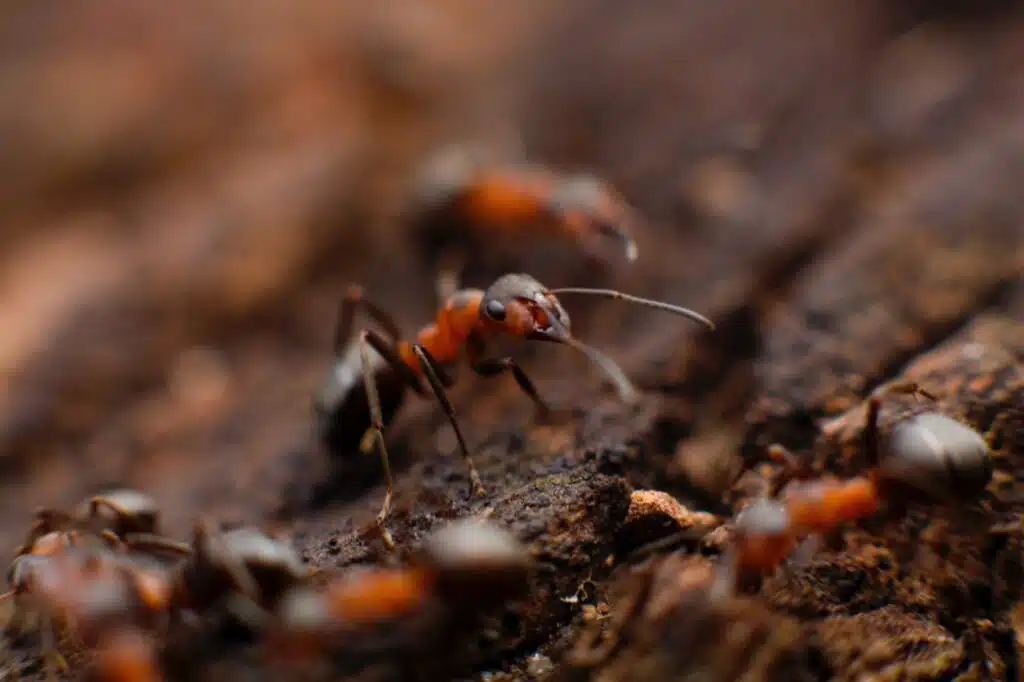
b. Leaf Litter: Fallen leaves create a cozy blanket for bugs to burrow beneath. Insects like ground beetles and centipedes may use leaf litter as their winter sanctuary.
c. Soil and Underground: Insects that don’t hibernate may burrow into the soil, seeking refuge from the cold. This method offers protection against freezing temperatures while providing access to food and moisture.
d. Human Structures: Bugs often find their way into our homes and other structures to escape the cold. Common pests like spiders, ants, and cockroaches seek shelter indoors during winter.
How Do Bugs Survive the Winter?
Bugs employ various survival strategies to endure the harsh winter conditions in Salt Lake City. These strategies often involve changes in behavior, physiology, or both.
a. Dormancy: Many bugs enter a state of dormancy, reducing their metabolic rate and conserving energy. This helps them survive when food sources are scarce.
b. Antifreeze Proteins: Some insects have evolved the ability to produce antifreeze proteins, preventing their bodily fluids from freezing, even in subzero temperatures.
c. Cold tolerance: Certain species of insects have adapted to endure cold temperatures through various mechanisms, such as physical adaptations or specific behaviors.
d. Diapause: During diapause, an insect’s or animal’s metabolic processes slow down, and they often exhibit physiological changes to adapt to their environment. Bed bugs go into a dormant state called diapause as temperatures decrease. In this state, bed bugs do not feed and their metabolism slows down.
What to Do When You Encounter Winter Pests in Salt Lake City
As the temperature drops, insects and rodents often seek shelter and warmth indoors, making it essential to know how to deal with these unwelcome visitors. Here are some tips on what to do when you encounter winter pests in Salt Lake City.
Identify the Pest:
The first step in pest management is to identify the intruder. Common winter pests in Salt Lake City include mice, rats, spiders, cockroaches, and ants. Knowing the type of pest will help you determine the most effective strategy for removal.
Prevent Entry:
Seal any cracks, gaps, or holes in your home’s exterior to prevent pests from entering in the first place. Weatherstripping, caulk, and mesh screens can be your best friends in keeping these pests out.
Maintain Cleanliness:
Keep your home clean and clutter-free. Pests are attracted to food sources, so store food in airtight containers and clean up crumbs and spills promptly. Regularly take out the trash, including food waste.
Natural Repellents:
To deter pests, consider using natural pest repellents like peppermint oil, cedarwood, or diatomaceous earth. These methods are non-toxic and can be effective in keeping pests at bay.
Professional Pest Control:
If you’re dealing with a severe infestation or unsure how to handle it, it’s best to consult a professional pest control in Salt Lake, City They have the expertise and resources to handle pests safely and effectively.
Humane Traps:
If you prefer humane removal, use live traps to catch rodents and release them outside, far from home. Make sure you follow local regulations for humane pest control methods.
Remember, encountering winter pests is common in Salt Lake City, but with these strategies, you can take proactive steps to protect your home and keep it pest-free during the colder months.
Related Articles
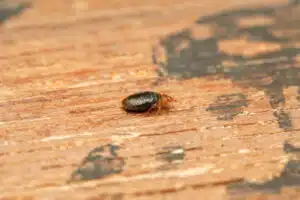
Tick vs. Bed Bugs: Differences and Similarities
Understanding the differences between two common blood-sucking pests, ticks and bed bugs, is important. We want to make sure you know exactly what kind of pests you’re dealing with,
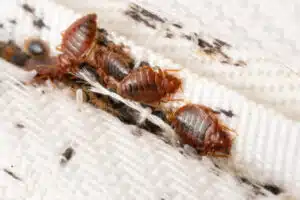
Where Do Bed Bugs Come From, and How to Prevent Them? A Guide for Salt Lake Residents
Bed bugs can be a major nuisance and cause various physical and emotional problems, including skin irritation, anxiety, and sleep disturbances. In Salt Lake City, bed bugs are a growing concern, especially in apartment buildings, hotels, and other high-density living spaces. But where do bed bugs come from, and how can you prevent them from infesting your home or property?
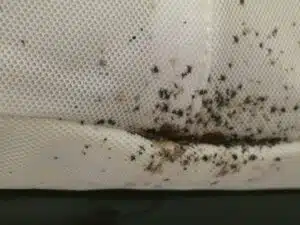
Are All the Tiny Black Bugs in My Bed Bed Bugs?
Sleeping is one of the things that we look forward to after a very long day. We recharge ourselves by sleeping by the end of the night to be refreshed the next day. But we can be disturbed even during our sleep by pesky pests crawling and hiding where we sleep. That’s terrifying, right? Pests that are known to annoy us during our sleep are bed bugs. They are usually found where humans and other pets sleep. Bed bugs can be almost anywhere in the world – even in your Saltlake home! They can be annoying because they suck your blood and leave you with an itch and bumps in the infected area. So blood attracts them, even the blood of other animals. Therefore, you should conduct bed bug removal if you have them. If you find bugs on your beds, you might think they are bed bugs. But are they?

Can Bed Bugs Live in Your Car?
Bed bugs are small, flat, and oval-shaped insects that feed on the blood of humans and animals. During the day, bed bugs hide in cracks and crevices around beds, furniture, and baseboards. You can also find them in mattresses, bed frames, blankets, carpets, and other fabric items throughout your home. While it is possible for bed bugs to infest your car, they’re less likely to do so than inside a house or other structure.
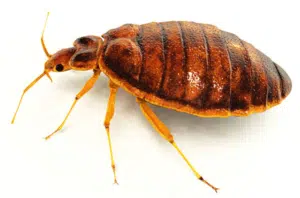
How to Find Bed Bugs in Your Home
Bed bugs are small, blood-sucking that feed on human and animal blood. They belong to the family Cimicidae, contain over 100 species, and have been around for millions of years.

Can Bed Bugs Jump?
Bed bugs are a common household pest that can be difficult to get rid of. These tiny insects can live in any crevice or crack in your home and feed on blood.
